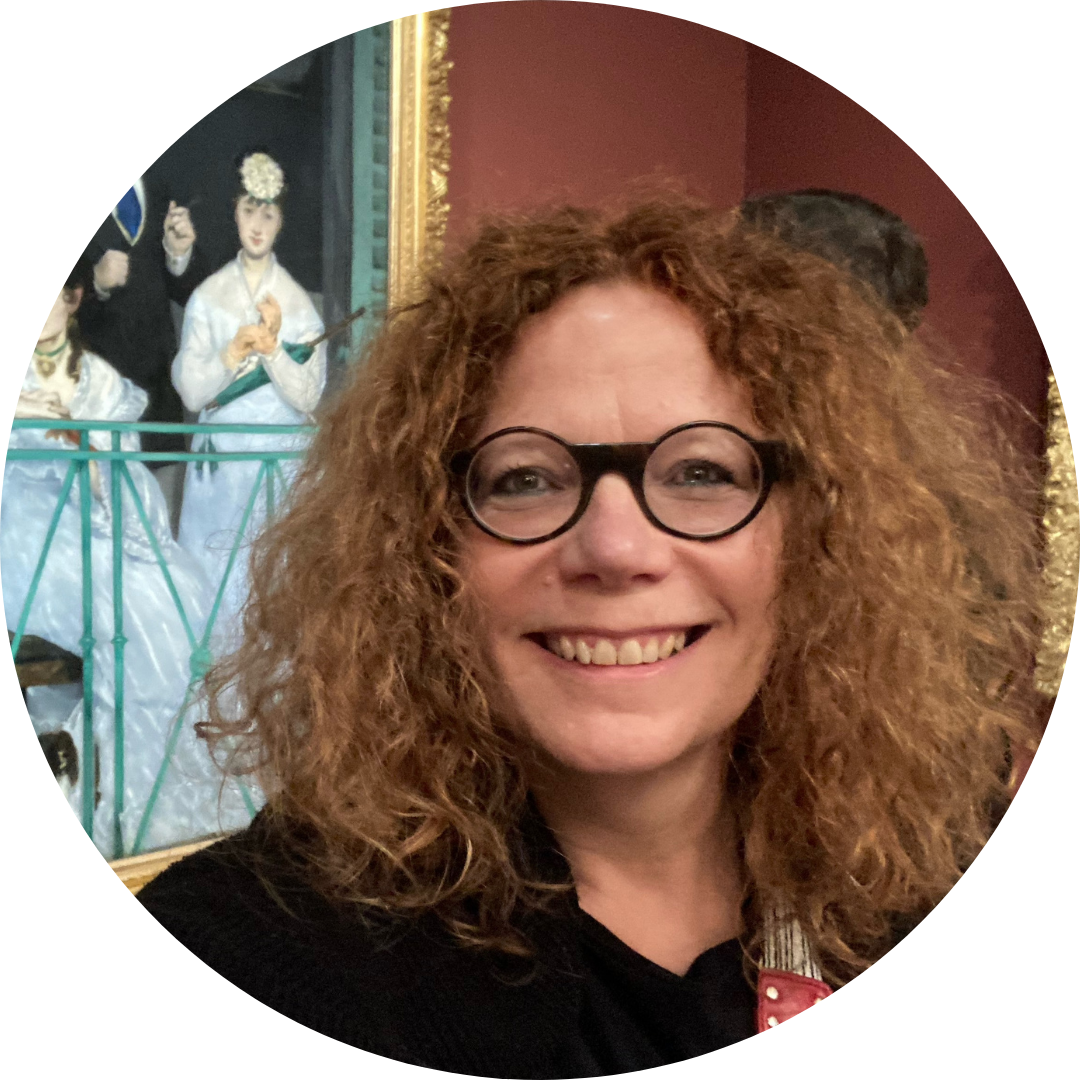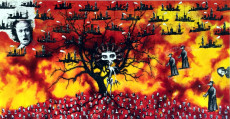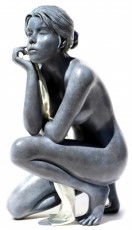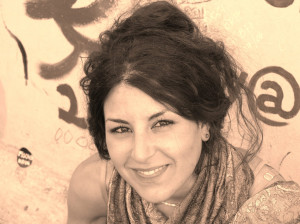
The place of women in the 16th centurycle

About the exhibition “The scepter and the distaff, being a woman between the Middle Ages and the Renaissance”, on view at the Tours Museum of Fine Arts until June 17.
You have until June 17 to go to the Museum of Fine Arts in Tours, which is presenting a truly exceptional exhibition! “The scepter and the distaff, being a woman between the Middle Ages and the Renaissance”, beautifully addresses the true place of women in the 15th and 16th centuries in France and Northern Europe. Because imagine that our distant ancestors were not all just “daughters of”, “wives of” or “muses of”… They also had leading roles to play in society at the time. In over a hundred major works of art, whether paintings, sculptures, manuscripts, prints or everyday objects, from the greatest museums, the Tours exhibition masterfully highlights the place, the role and image of women in society at the end of the 15th and beginning of the 16th century. It is based on the historical advances of recent decades, as well as the work of a scientific committee bringing together eminent specialists on the subject. And all women find their place there: princesses, nobles and bourgeois, traders and peasants, rich and poor, happy and unhappy, in power or at work, wives or widows, real or imaginary...
Tempting, no? It’s a change from the contemporary art market, I grant you. And here there will be no works of art for sale. But as my modern art history professor kept repeating, showing us the painters tirelessly copying the masters, "no, we haven't been reheating the same dish since Antiquity, we're always doing something new, but we must seize history in order to assimilate it and be able to move beyond it.” So, in addition to being deeply interesting, to challenging clichés and preconceived ideas, to offering a new look at women of the medieval and modern eras, approached in all their depth, to offering a historical perspective on a major issue in our contemporary societies… the subject of this exhibition in Tours allows us to discover or rediscover gems!
It must be said that the exhibition, curated by Elsa Gomez, heritage curator at the Museum of Fine Arts in Tours, and Aubrée David-Chapy, associate professor and doctor in modern history, benefits from the support of the largest heritage institutions French: the National Library of France, the Louvre Museum and the National Museum of the Renaissance – Château d'Écouen have given their exceptional participation to this project. The Cluny Museum - national museum of the Middle Ages, the Palace of Versailles; but also, in particular, the castles of Saumur and Langeais, the museums of Dijon, Grenoble, Lille, Orléans, Reims, Rennes and Valenciennes, have also entrusted the Museum of Fine Arts of Tours with exceptional works of art. Thus, more than ten years after the exhibition “Tours 1500. Capital of the arts”, it reconnects with this fundamental period that is the Renaissance for the history of the city and its region.
For the magazine L'Oeil for the month of March, journalist Marie Zawisza selected six works of art illustrating six "keys to understanding the true place of women in the 16th century", which I will list here to get you started To the mouth.
An illumination on parchment to start. That of the book La Cité des dames, by Christine de Pizan (1364-1430). This French philosopher and poet of Italian birth, widowed at 25, freed, is represented in front of her works and holding a book in her hand. “Why call The Romance of the Rose “art of loving”? It is rather the art of teaching men bad tricks to deceive women,” protested the writer in 1405, “at a time when the supporters of a misogynistic discourse and the fervent “champions of ladies "are quarreling around this poetic work", Marie Zawisza reminds us. “If she remains a woman of her time and does not call into question the hierarchy of the sexes, Christine de Pizan defends their ability to study as well as to govern,” underlines Elsa Gomez, the director of the museum.
The journalist from L'Oeil then addresses the theme of "the mother of the family, the center of a harmonious home" with the painting attributed to Herman Van der Mast, painted in 1577 and entitled Family Portrait. “Certainly, if we pay little attention to it, it simply represents the painter Frans Franken I (1542-1616) and his family: his wife Elisabeth Mertens and their four children, Frans, Thomas, Magdalena and Hieronymus. In the background appear the fathers of each spouse who seem to watch over the family genealogy. A classic portrait, if the paterfamilias occupied the center of this pyramidal composition... but this place is reserved for his wife! Her eldest son points at her, as does her husband,” Marie Zawisza observes. Because the painter effectively overturns conventions here to better demonstrate the reality of the time: women are in charge of the house and take care of the education of the children. But that obviously, men who were well rid of themselves were not likely to be offended…
It is the painting painted at the beginning of the 16th century after Marinus Van Reymerswaele, The Banker and His Wife, which illustrates the paragraph devoted to women of the Middle Ages and the Renaissance as being “valuable partners in business”. If she is not mentioned in the title of the painting as also being a banker, her representation by the painter, leaning over an account book, in fact designates the wife as being a full partner in this professional activity. “Writing the history of women is not just saying that they were dominated or victims – they acted, worked, loved, created. It’s talking about them as actors of History,” writes historian Michelle Perrot, quoted in the exhibition catalog.
The Portrait of Catherine de Medici, painted around 1556 after François Clouet, allows us to show the Queen of France other than as a widow, in addition to talking about politics. She is in fact represented here richly adorned, before she gave up wearing her jewelry in 1559 after the accidental death of her husband Henri d'Orléans, son of François I. Yes, at that time women governed without hiding behind a man! Isabeau of Bavaria, Anne of France, Louise of Savoy, Marie of Burgundy, Marguerite of Austria… even if Catherine de Medici “represents the apogee of feminine political intelligence, theorized by Christine de Pizan, of whom all the women of power of the 15th and 16th centuries own the works,” explains Elsa Gomez, “many of them know how to captivate foreign courtiers with their eloquence.”
An engraving from 1510, The Witches' Sabbath, by Hans Baldung Grien, serves as a reminder that witchcraft greatly worried people at the beginning of the 16th century. Witch hunting began at the end of the Middle Ages and continued until the 17th century. A woman absolutely had to strive to resemble the Virgin Mary as much as possible if she did not want to pass for a witch... In any case the subject fascinates this German artist trained in Dürer's workshop. And we know how much she inspires contemporary art today, given the number of works of art for sale making the witch the emblem of feminism.
Finally, Judith and Holofernes, painted in oil on wood around 1530-1533 after Ambrosius Benson - or rather Judith and the severed head of Holofernes - tell us about the heroic woman who awakens desire... Yes. It is not because in the Middle Ages and the Renaissance women were excluded from the military field that artists did not represent them in arms, drawing inspiration from the Bible, or from Greco-Roman Antiquity. Except that the weapon systematically attributed to women is called seduction... And that, I wonder if it will one day evolve.
 Article written by Valibri in Roulotte
Article written by Valibri in Roulotte
Illustration: Sainte-Madeleine, anonymous. Netherlands, 16th century. Oil on woodLe Puy-en-Velay, Crozatier museum





































































